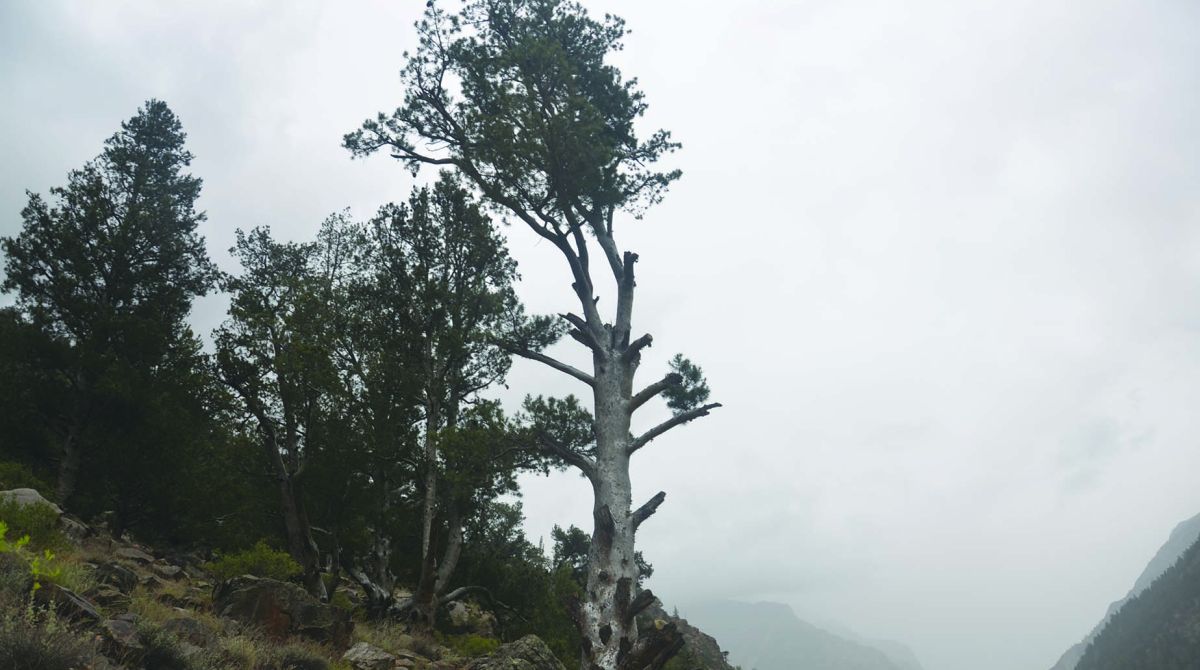Kangra to witness massive development: Himachal CM
Chief Minister Sukhvinder Singh Sukhu has said that Kangra district in Himachal Pradesh will witness massive development.
Pinus gerardiana is a sparsely distributed conifer confined to Eastern Afghanistan, North-Pakistan and North-western Himalayan region of India.

Concerned about the depleting reserves of Pinus gerardiana wall commonly known as Chilgoza pine in Himachal, the Himachal Pradesh Council for Science, Technology and Environment (HIMCOSTE), Shimla and Himalayan Forest Research Institute (HFRI) have collaborated for its conservation.
A project worth Rs 1.96 crore on “Studies on improving livelihood generation through scientific interventions in Pinus gerardina Wall and important wild mushrooms in Himachal Pradesh” has been sanctioned by the Department of Science and Technology of the Government of India jointly to the two institutes for a period of three years.
Advertisement
“Of the Rs 1.96 crore, about Rs 1 crore is earmarked for the conservation of Chilgoza. The study aims to undertake several studies culminating in improving the livelihood generation of local farmers through scientific interventions,” said Kunal Satyarthi, member secretary of HIMCOSTE.
Advertisement
Since the services of the forest department are required for undertaking the project, a tripartite memorandum of understanding has been signed between the two institutes and the forest department, he added.
“Unscientific extraction of the chilgoza nuts for consumption and marketing, grazing and its use as timber and resinous torchwood has made the pine tree an endangered conifer of the Himalayas. It is listed in the near threatened category as per International Union for Conservation of Nature (IUCN). Severe biotic interference and lack of regeneration in this pine may result in its extinction in years to come, hence it has become all the more imperative and urgent to protect and conserve this valuable edible nut yielding conifer,” Satyarthi said.
He said conservation of Chilgoza pine can be initiated by creating awareness among the local communities through various extension programmes. He said the successful implementation of conservation programmes is possible by ensuring participation of local communities in various afforestation programmes being undertaken by Forest Department and other agencies.
Chilgoza Pine is one of the important edible nut yielding pine species out of 29 such species all over the world. An important conifer of the Western Himalayas, It is the only conifer in India which bears highly nutritious edible nuts. It is one of the indigenous and socio-economically important conifers of inner drier regions of Himachal Pradesh.
It is also known as “Champion of the Rocky Mountains” because it grows on inaccessible and difficult site conditions which commonly prevail in inner drier tracts of Western Himalayan region.
Pinus gerardiana is a sparsely distributed conifer confined to Eastern Afghanistan, North-Pakistan and North-western Himalayan region of India.
In Himachal Pradesh, it is mainly found in Kinnaur district and small patches have also been recorded in Pangi and Bharmour parts of Chamba district. It is found in inner dry tracts of temperate zones of North-western Himalayas growing at elevations between 1800 metres to 3000 metres above mean sea level.
In Kinnaur district covering an area around 2844.53 hectares, Chilgoza Pine occurs in the forest ranges of Bhabanagar, Kilba, Pooh, Kalpa and Moorang. It also occurs in the district of Chamba in about 35 hectare area in the forest ranges of Killar, Bharmour and Holi. It is also reported in Dachhin area in the Marwah valley of Doda (Jammu and Kashmir) and Malari and Bampa area of Garhwal (Uttarakhand).
The objective of the project is to study current harvesting practices and its impact on cone production, to determine maturity indices for seed collection and suitable storage conditions for enhancing seed longevity, to screen out best seed sources for raising quality planting stock, development of extension material for dissemination of technology to end users and awareness generation, said HFRI scientist P S Negi.
During a planning-cum-review meeting it was recommended that steps should be initiated to declare Pinus gerardina as the “Theme tree” for Kinnaur through appropriate notification, he disclosed. It is the only pine which has immense importance among the local tribal communities in Kinnaur district as they harvest the seeds or nuts of this tree for earning their livelihood. It also forms an important part of their diet as well as for meeting various social obligations, said Negi.
The approximate export value of its annual produce is around Rs 18 crore, he said, adding that Chilgoza Pine plays an important role in improving socio-economic conditions of the local communities residing in Kinnaur district. Developmental work, especially construction of hydroelectric projects and roads has also posed a serious challenge for the survival of Chilgoza trees in their zone of occurrence, Negi said, adding that Chilgoza trees are being cut down for promotion of these developmental works in these fragile and sensitive areas of Kinnaur district.
A temporary research station is being set up at Reckong Peo, the headquarters of Kinnaur district for carrying out preliminary research work. Additionally, a nursery is also being set up in collaboration with the Forest department to raise seedlings of Chilgoza pine.
Chilgoza Pine was first discovered by British Army Officer ‘Captain Patrick Gerard’ in 1832 in India. It is very slow growing tree and its average life span is 150-200 years.
Advertisement